




Your support is critical to our success.
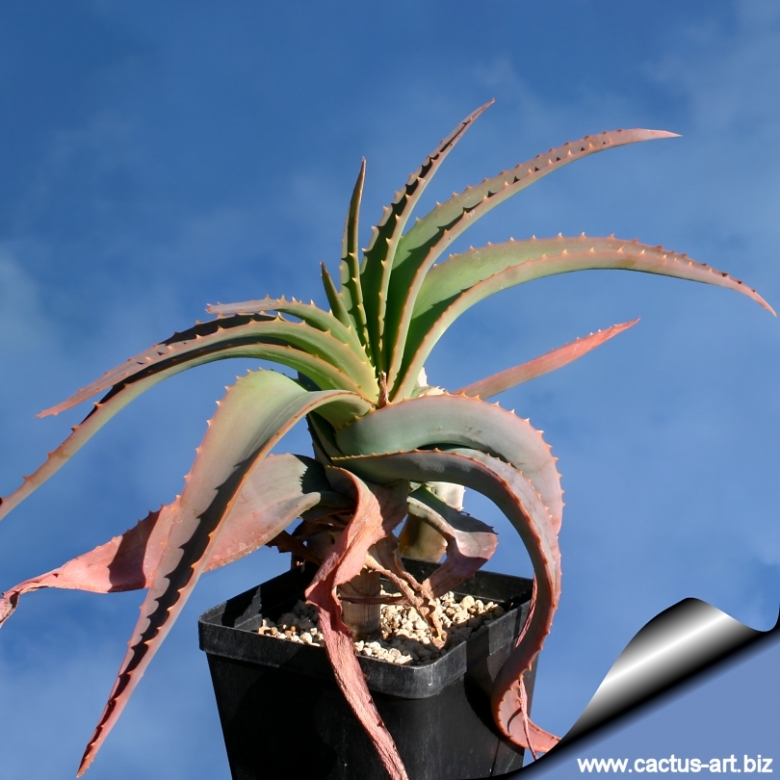
At the end of the dry winter rest this plant shows a fascinating reddish tinge of foliage.
Origin and Habitat: Kenya, Marsabit district. The species is known only from the type locality.
Altitude: 1375 meters over sea level.
Habitat: It grows on rocks.
Synonyms:
- Aloe richaudii Rebmann
Description: Aloe richaudiiSN|648]]SN|648]] is a distinctive species characterised by yellow flowers and yellow teeth on the leaf-edges.
Habit: Stemless, branching from the base to form clumps with five or six rosettes.
Leaves: About 18, lanceolate up to 30 cm long and 8 cm wide, upright to spreading, bluish-green, reddening in cool weather or under stress conditions. Margins with yellow teeth up to 2 mm long and about 8 mm apart.
Inflorescences: Racemes capitate, one or two branched and up to 32 cm tall with egg-shaped, white bracts 8-9 mm long and 3-5 mm wide. Heads of flowers, dense 4,5-5 cm long and 6,5-7 cm in spread.
Flowers: about 30 mm long, 7 mm in diameter, hanging downward from the top of the grape, cylindrical, yellow, pedicel 16-18 mm long. Outer tepals almost completely free. Stamens and pistil not protruding.
Bibliography: Major references and further lectures
1) Urs Eggli “Illustrated Handbook of Suculent Plants: Monocotyledons” Springer, 2001. Pages 114-115
2) Susan Carter, John J. Lavranos, Leonard E. Newton, Colin C. Walker “Aloes. The definitive guide.” Kew Publishing, Royal Botanic Gardens, Kew 2011, ISBN 978-1-84246-439-7, S. 251.
3) Gideon F. Smith, Colin C. Walker, Estrela Figueiredo “What’s in a name: epithets in Aloe L. (Asphodelaceae) and what to call the next new species.” In: Bradleya. Band 28, 2010, S. 99.
4) Edgar Lamb, Brian Lamb “The Illustrated Reference on Cacti & Other Succulents" Volume 5 Blandford Press, 1978
5) Gordon D. Rowley “The illustrated encyclopedia of succulents” Crown Publishers, 01/Aug/1978
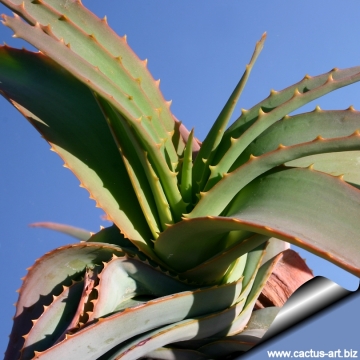
Aloe richaudii Photo by: Cactus Art

Aloe richaudii Photo by: Cactus Art
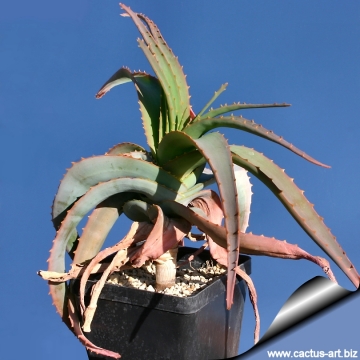
Aloe richaudii Photo by: Cactus Art
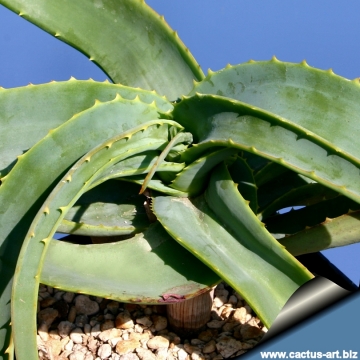
Aloe richaudii Photo by: Cactus Art
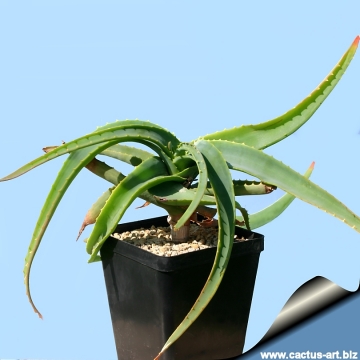
Aloe richaudii Photo by: Cactus Art
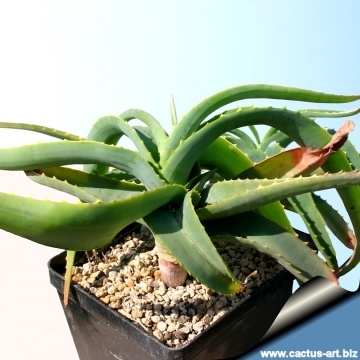
Aloe richaudii Photo by: Cactus Art
Cultivation and Propagation: It is relatively easy to cultivate under a wide variety of climatic conditions provided it is planted in a well-drained situation given adequate water but not over-watered.
Soil: Grow it in an open sandy-gritty cactus compost.
Pots: It needs a relatively shallow pot to accommodate its fibrous roots and provide a very good drainage. It may stay in the same pot for many years.
Watering: Water in moderation. Keep dry in winter or when night temperatures remain below 10° C. Water it less than average if in bigger pots.
Special need: Provide very good ventilation. Nearly all problems occur as a result of overwatering and poor ventilation, especially when weather conditions are dull and cool or very humid.
Fertilization: Light fertilizer seems to boost its growth whenever additional water is given.
Feed them during the growing season with a fertilizer specifically formulated for cactus and succulents (high potash fertilizer with a dilute low nitrogen), including all micro nutrients and trace elements diluted to ½ the strength recommended on the label. They thrive in poor soils and need a limited supplies of fertilizer to avoid the plants developing excess vegetation, which is easily attacked by fungal diseases.
Exposure: It enjoys light-shade. It may be grown in full sun too but protect in summer from afternoon sun, and avoid reflected heat. It will do its best with some sun and become stressed with inadequate light which could result in poor growth and unnatural shape. Direct sunlight along with prolonged drought and make the leaves turn a reddish colour, a sign generally associated with stress.
Hardiness: It likes warmth (recommended minimum winter temperature 5° C) however plants kept perfectly dry can can survive low temperatures, approx. -2° for short periods, but for safe cultivation it is best to avoid freezing temperatures.
Use: This is a good pot plant suited for a non heated green house. It can be also cultivated outdoors in raised beds, terraces if sheltered from winter rain.
Maintenance: Removal of old flower stalks.
Propagation: Propagation is by seed, as it seldom offsets. Seeds must be sown as fresh as possible. The best time for sowing would be in the spring or summer when temperatures are warm. Use coarse, well-drained sandy soil and cover seeds lightly, then keep moist. Cover the seeds with a fine layer of grit and water from below with a with a long-lasting fungicide, as seedlings are prone to damping off, a fungus that eventually kills the young plants. For the 1-2 weeks cover the pots with a sheet of glass/clear perspex to keep the humidity levels high. Remove the glass and replace it with light shade-cloth and mist once or twice a day for the next two weeks after which most seeds should have germinated. From then on mistings can be reduced to every second and then every third day as the little plants grow. If you have a number of them you could intentionally damage the growing point to see if it will offset, but wait to do that until early spring, when its growing season is beginning. It is easily rooted in potting soil with warmth.
| Your Actions | |
|---|---|
| Back to Aloe index | |
| Back to Aloaceae index | |
 |
Back to Succulents Encyclopedia index |
Privacy stantement - Terms and conditions - How to cite - About us - Feedback - Donate



